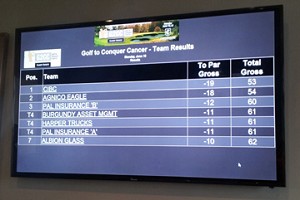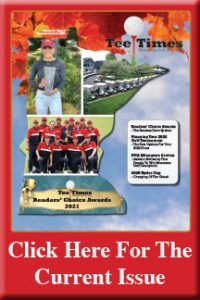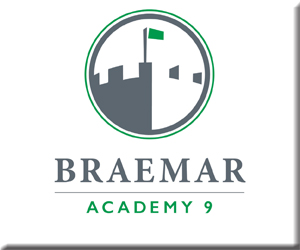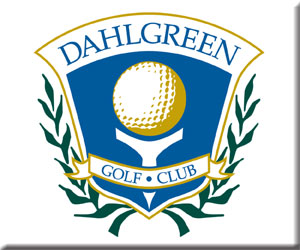Maximizing Income At Your Golf Tournament-Making The Most With The Right Format
By Phil Immordino
Choosing the right tournament format can make or break your event. There are some formats that help your participation and some formats that hurt your participation and there are some formats that generate more money than others.
When determining the right format for your event there are two questions:
1. What is the purpose of your event?
2. What is the caliber of your golfers?
THE PURPOSE OF YOUR EVENT
Different formats are used for different purposes. Here are some examples:
Fundraising – Scrambles and modified scrambles, team events
Entertaining – Scrambles and best balls, team and individual play events
Networking – Scrambles
Competition – Individual and team stroke play
CALIBER OF GOLFERS
There are many types of golfers. Try to determine the ability of your players before choosing a format. Here are the different types of golfers:
Handicap – Someone with a USGA Index, these are serious golfers.
Competitive – Someone who plays on a regular basis. For the serious players you want to consider best ball formats and individual play.
Social – Someone who plays once in awhile and doesn’t worry about their score.
Annual – Someone who plays once a year, usually in tournaments. For the not so serious players scrambles work best.
FORMATS FOR PARTICIPATION
Different players like different formats. If you understand how these formats work and the desires of your golfers, you cannot go wrong. Here are the different formats for you to consider:
Scramble – This is a great format for a variety of skilled golfers. A foursome will play together as a team. Everyone hits their own ball from the tee box. They will pick the best of the four drives. The other three will pick up their ball and hit their second shot from there. Everyone hits their second shot and picks the best one and hits their third shot from there. This is continued until the hole is finished. Having one score for the team on each hole. Many tournaments will ask every player to use at least two to three drives each. This prevents the best player in the group from dominating the round and gives everyone a fair chance to contribute.
Modified Scramble – This format is liked by golfers who want to play their own ball yet still keep up the speed of play. It is similar to scramble in that everyone hits their drive and the best one is chosen. The second shot is hit from there. The difference is each player plays his own ball in from there. The best score is taken on each hole and the total on all 18. This is also a team effort.
Best Ball – This format is for better golfers who like to play their own ball. This is also a team effort. Everyone plays his or her own ball throughout the whole round. The team will take the best score on each hole and add up the total for the 18 holes.
Match Play – This game is played hole by hole. The golfer with the low score on each wins that hole, giving him/her plus 1. The player that loses that hole is minus 1. If they tie, it is considered even. The golfer that wins the most holes is the winner.
Medal Play or Stroke Play – This is the basic and simplest way to score a golf game. You just take the total strokes. The winner is the one with the lowest number of strokes.
Handicapped – This format keeps the playing field even. Frequent golfers have established a rating with the USGA called a handicap. In simple terms it is the average score of a golfer over par less 20%.
FORMATS FOR INCREASED REVENUE
If money is your top priority, there are many formats that can generate more money than your typical scramble. Here are some examples:
Pro-Am – This type of event puts a professional golfer with amateur golfers. Typically there is one pro in every foursome. Using this format you can charge more for the foursome.
Celebrity – This format uses groups comprising one celebrity and three or four amateurs. Using this format also generates more than your typical registration fees.
Night Golf – This is a unique format that is played at night with glowing balls. This is a lot of fun and typically played on an executive course. It opens up your playing field to non-golfers again resulting in more registration fees.
Golf-A-Thons – This format can be a major fund-raiser. Up to forty golfers start at 6:00 AM and play all day. The goal is to play at least 100 holes of golf. Prior to that day, the golfers raise pledges per hole. This can raise thousands of dollars for charity and can generate anywhere from $50,000 to $100,000 for your organization.
SCORING
Scoring is an important part of your event and it is designed to provide all of your golfers with the same chance of winning. Golfers want to win, and they want to win fairly at the same time as understanding the process. The golf course will typically do the scoring for you but you should understand how it is done so that when golfers inquire you know the answers. Here is how some of the scoring methods work.
REAL TIME SCORING – Real Time Scoring is now available. This allows golfers to see where they stand on the leaderboard at any given time. It is a nice touch to your tournament and can be done on their smart phones.
HANDICAPPING
Handicapping is designed to enable golfers of all skill levels to compete on an equitable basis. Golfers want to know that they have a chance to win the tournament. Bad golfers cannot compete with good golfers unless there is handicapping.
So what is handicapping? The USGA (United States Golfers Association) has a handicapping system. As mentioned earlier it is roughly based on average score less 20%. The challenge is that most golfers do not have an official USGA Index (Handicap). This makes it difficult for most events to use official handicaps.
Consider a couple of options when handicapping your event:
De-emphasize Winning – In others words do not offer really great prizes for 1st, 2nd & 3rd. Offer good prizes, not great prizes. Offer prizes worth competing for but not worth cheating for.
Ask For Average Score – Find out what a golfer scores on an average, then you can break them into groups.
Flight Your Event – Put different level golfers into different levels of competition. Let the good golfers compete against each other and the bad golfers to do the same. 1st, 2nd and 3rd in each flight.
A Flight – Golfers that score in the 70’s
B Flight – Golfers that score in the 80’s
C Flight – Golfers that score in the 90’s
OTHER SCORING METHODS
If many of your golfers do not have USGA handicaps, you can use alternate ways of calculating a handicap. These systems can be confusing, so remember that the PGA pro at the golf course you are working with will typically assist you with these handicapping methods.
Understand the golfers that come to your tournament and select the format that best fits their expectations. Your event will be more successful and therefore maximize your revenue.









